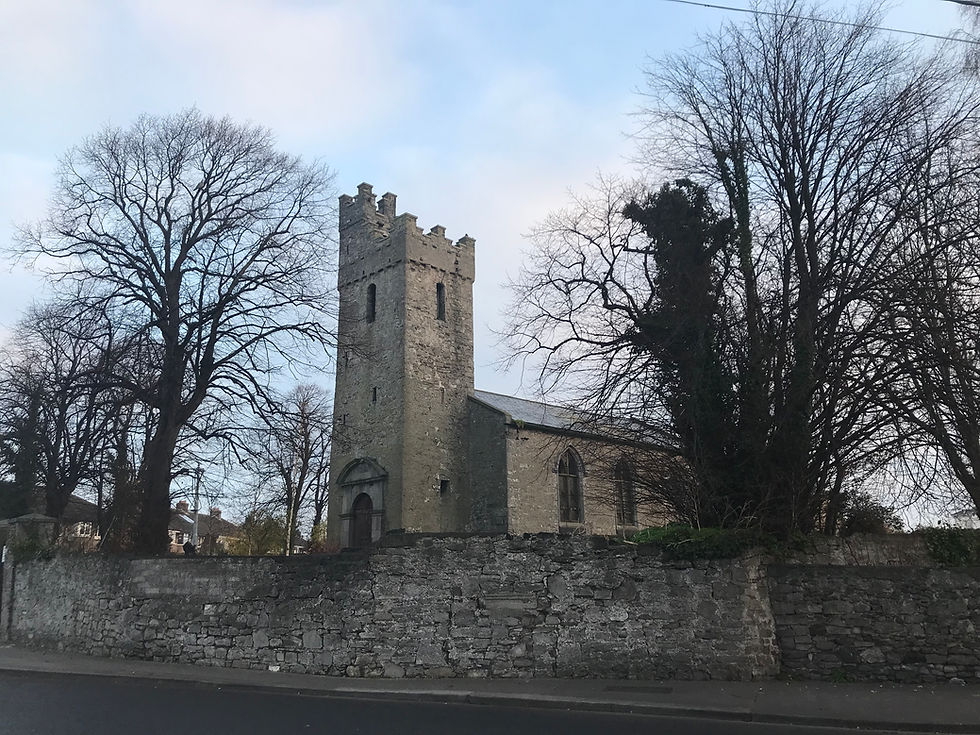Crumlin: Diluting History
- Julie Nicholl-Flood

- Sep 11, 2023
- 3 min read

In recent years I became increasingly aware of Crumlin’s rich history. Crumlin is one of 22 Architectural Conservation Area’s (ACA) in Dublin. Just a short stroll through Crumlin Village you can see the sights: the old church, the village houses, even the modern cinema now bingo hall and Crumlin cross. Every one of these sights ignites my interest and wonder of the people that lived here.

I am passionate about a lot of things and history is one of them. It fascinates me.
It was this love of Crumlin and the disputed planned development at Glebe house in Crumlin Village a few years back that led me to my research project. The focus of this project was determining if apartments [were] the tenement slums of the future and the downfall of local communities? Do you ever really know your neighbours?
The homeless crisis over the last decade, has fueled widespread building of apartments around suburban areas, such as Crumlin. A once vibrant country town, come social housing scheme, a dream to those relocating from the inner-city slums, based on the ideals of Sir Ebenezer Howard at the turn of the 20th Century, and brought to life by architect Herbert Simms.
The inner city of Dublin in the 1900’s, home of rising, rat-infested tenements or slums post World War 1 put pressure on Dublin City Council to develop proper housing for tenement occupants in areas like Crumlin - a then country village with a rich history dating back to at least the 15th century, home to many aristocratic families, and resting ground to William of Orange following the battle of the Boyne in Drimnagh Castle (Watchorn, 1985).
So where did things go wrong for areas like Crumlin? Lack of investment, rise in population and mass housing developments built and destroyed small communities.
Following several tenements collapsing around the city, most notably on Church Street in 1913, this forced leaders to build Irelands first housing estates, based on London’s Garden City Movement (Tragedy in Dublin as tenements collapse | Century Ireland, 1913).
The idea was outlined by Sir Ebenezer Howard in Garden Cities of To-morrow (E. HOWARD, GARDEN CITIES OF TO-MORROW, 1902). The Utopian ideal as recreated in Marino, North Dublin - untouched still to this day, was that its inhabitants would live harmoniously with nature. These developments were a breath of fresh air compared to the chaos and squalor of inner-city tenement life, providing safer and healthier surroundings to bring up their families.
The Dublin Corporation inter-war housing scheme, consisted of approximately 3000 homes being built in Crumlin, between 1934 – 1944 by G&T. Crampton.

Many other housing estates sprang up north and south of the city including: Cabra, Drimnagh, Ballyfermot and Walkinstown, but none to the design of Marino and Crumlin. The city architect, and brains behind the schemes Herbert Simms sadly commit suicide in 1948, but his legacy lives on in his work today. Many of the flat’s complexes in the inner city are now protected structures (McManus, 2021). However, unlike Marino, Crumlin’s original housing designs have been destroyed by many modern building and cosmetic changes such as cladding. From 1932 until 1948 around 17,000 homes were built for Dublin families. The council using his blueprints continued his vision, but not on the same quality scale. The housing estates of this type fell into decline with the emergence of cheaper building materials and mass demand for affordable housing.
In the last few decades, councils sold off social housing to tenants or private purchasers reducing safe housing for lower income families. Although it’s emerged in the news today that over 3000 council properties are lying vacant. Housing is a basic human need and right as outlined by the UN in the International Bill of Human Rights. It is critical to a person’s dignity, safety and to their contribution in their community (Fact Sheet No.21, The Human Right to Adequate Housing, 2021).
It is this idea of community that began to form my questioning on why Crumlin and areas like it have gained and retained such a bad reputation. From my own experience, these areas are the emblem of community. Like every area, there are spikes in crime, but this doesn’t reflect the good people living there. Some of my family emerged from the Ship Street tenements to Crumlin in 1939 and have seen Crumlin change so much since the housing development was built. I reminisce on memories from stories told about how my family came and lived in Crumlin, where they came from and what they became.
Over the past decade, the investment that has gone into the area with new businesses and the launch of Bloomin’ Crumlin has really given the area a much-needed facelift. While it is refreshing to see the regeneration of the local community, the destruction these apartment complexes are having on the landscape are depressing. My hope is that the council will open up the vacant homes already built and preserve the historic integrity of the village.


Comments